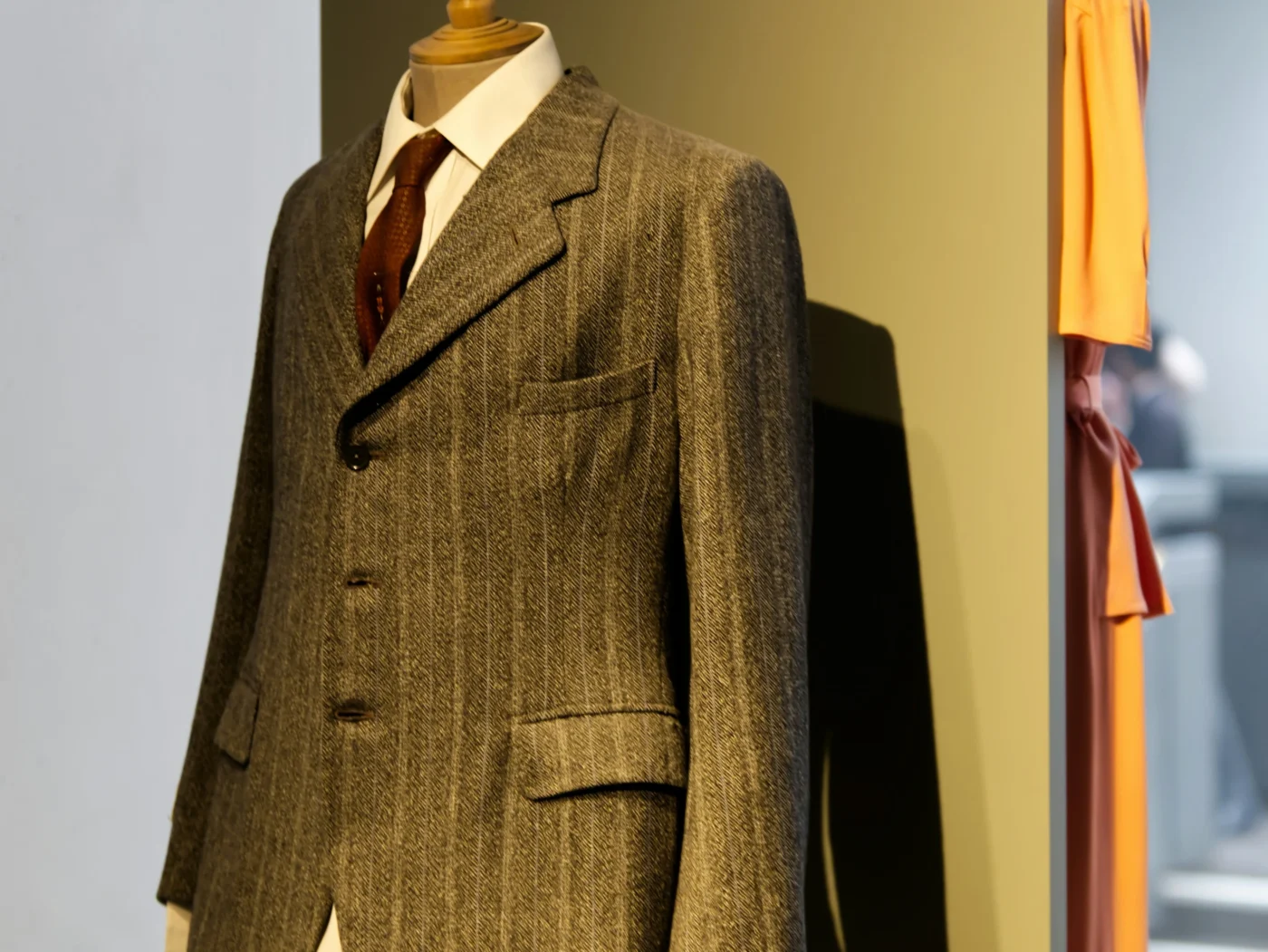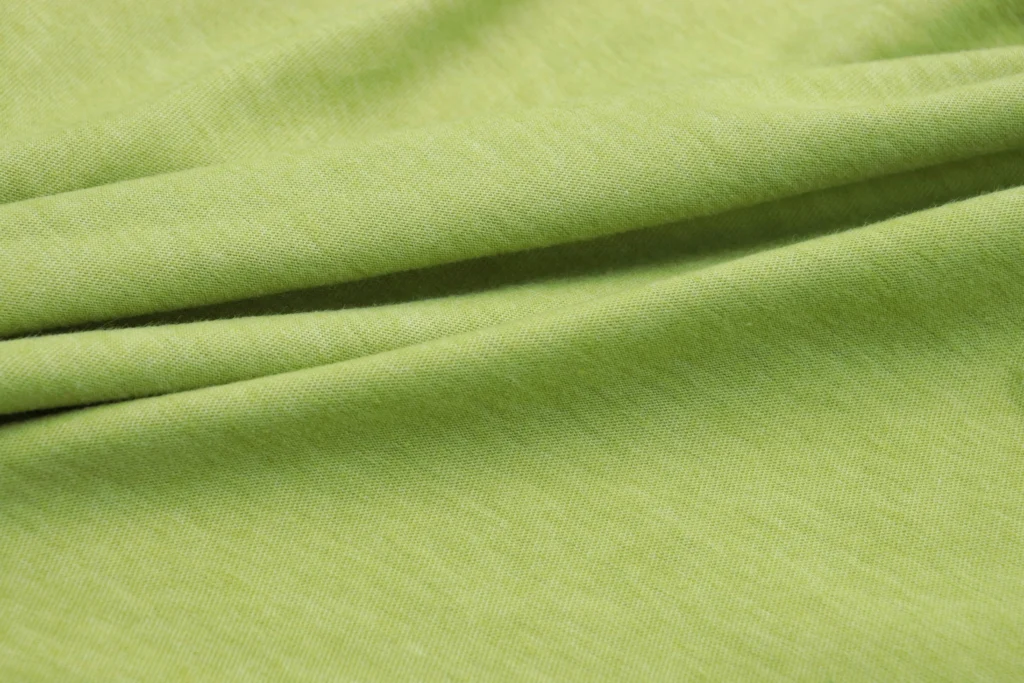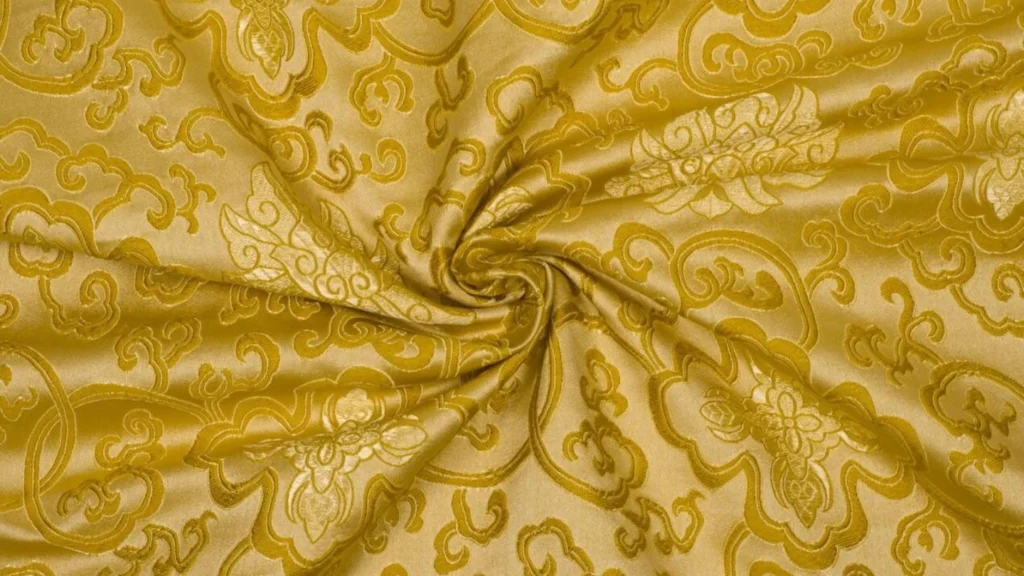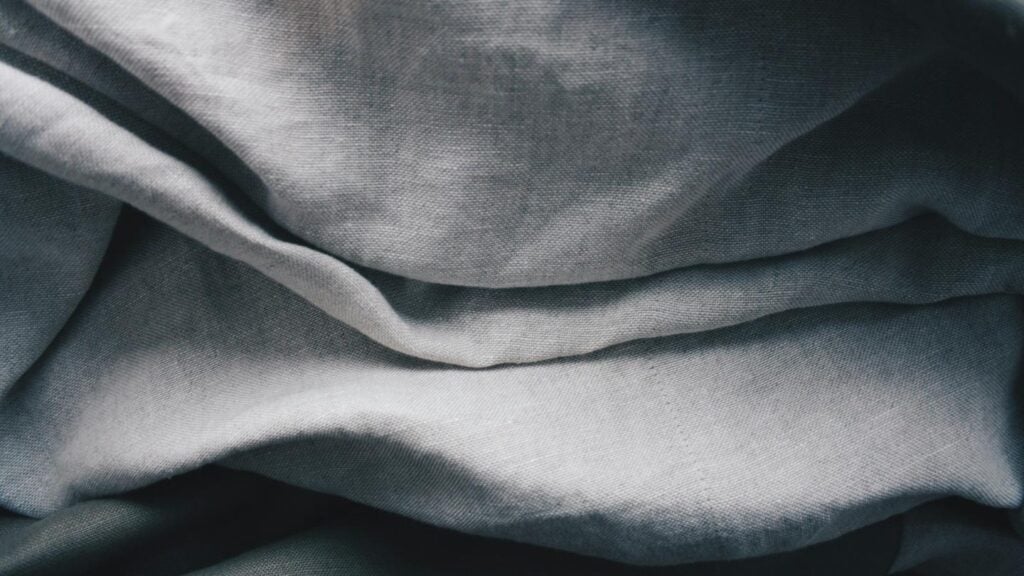2 – Merino Wool Fabric Composition
3 – Merino Wool Fabric vs Other Fabrics
4 – How Merino Wool Fabric Is Manufactured
5 – Common Uses in Fashion
6 – Understanding the Environmental Impact of Merino Wool Fabric
7 – Exploring Price Points and Value for Money
8 – Conclusion
9 – FAQs
What is Merino Wool Fabric?
Merino wool fabric is made from the fleece of Merino sheep, a breed known for producing some of the finest and softest wool in the world. Unlike traditional wool, which can often feel coarse or itchy, Merino wool is incredibly soft, lightweight, and breathable, making it a favorite choice for high-performance clothing and luxury fashion. The fiber structure of Merino wool is finer than regular wool, with individual fibers measuring just 18-24 microns in diameter, allowing it to feel soft against the skin, without the irritation often associated with thicker wool types.
Merino wool has been highly prized for centuries, dating back to Spain in the 12th century, where it was originally bred for its exceptional quality. Today, Australia and New Zealand are the largest producers of Merino wool, thanks to their ideal climate conditions for raising the breed. Known for its natural insulation properties, Merino wool helps regulate body temperature, keeping you warm in cold weather and cool in warmer temperatures. This unique ability to breathe while maintaining warmth makes it a go-to fabric for outdoor activities, sportswear, and luxury garments like suits and sweaters.

Key Features of Merino Wool Fabric:
- Softness: Finer fibers make Merino wool soft and comfortable, even on sensitive skin.
- Breathability: Merino wool helps regulate body temperature by allowing moisture to escape and air to circulate.
- Moisture-Wicking: It absorbs sweat away from the skin, keeping you dry and comfortable.
- Odor-Resistant: The fabric naturally resists odor, making it ideal for activewear and travel clothing.
- Sustainability: As a renewable resource, Merino wool is biodegradable, making it an eco-friendly choice compared to synthetic fabrics.
Due to its versatility and natural performance properties, Merino wool fabric has gained popularity across various industries, from fashion to outdoor gear, offering a perfect blend of comfort, style, and functionality. In the following sections, we will explore the origin, composition, and properties of Merino wool fabric to better understand why it continues to be a top choice for both everyday wear and specialized clothing.
Merino Wool Fabric Composition
The composition of Merino wool fabric plays a crucial role in its unique properties, including its softness, durability, and moisture-wicking capabilities. Merino wool is primarily made up of keratin, a natural protein found in animal fibers. The structure of Merino wool fibers, which are finer and more flexible than traditional wool, contributes to its softness and comfort when worn.
Key Components of Merino Wool Fabric:
- Merino Wool Fibers
The key component of Merino wool fabric is the fine wool fibers sourced from Merino sheep. These fibers are softer and finer than regular wool, typically ranging from 18 to 24 microns in diameter. The finer the fibers, the softer the fabric, making Merino wool ideal for clothing worn directly against the skin. - Keratin
Keratin is a natural protein that gives Merino wool its strength and elasticity. It also helps the wool retain its shape and structure, preventing it from becoming misshapen or sagging after repeated use. The unique structure of keratin also contributes to Merino wool’s natural odor-resistant properties. - Lanolin
Lanolin, a waxy substance naturally found in Merino wool, acts as a moisture-repellent agent. It helps regulate the moisture content of the fabric, allowing it to wick moisture away from the skin while still retaining warmth. Lanolin also adds to Merino wool’s natural water-resistant properties. - Scales
Each Merino wool fiber has tiny overlapping scales, which help trap air and enhance the fabric’s insulating properties. These scales are also responsible for the fabric’s ability to breathe, keeping the wearer comfortable in various temperatures by allowing moisture to escape and maintaining body heat in colder weather.

How the Composition Affects Performance:
- Softness: The fine nature of Merino wool fibers makes the fabric incredibly soft, reducing itchiness often associated with traditional wool.
- Temperature Regulation: The natural lanolin and scales in Merino wool help regulate body temperature, making it suitable for both cold and warm climates.
- Moisture-Wicking: Merino wool absorbs moisture away from the skin, keeping you dry and comfortable, making it a top choice for activewear.
- Breathability: Merino wool’s unique composition allows it to breathe, offering comfort for various activities, from sports to travel.
The composition of Merino wool fabric combines natural elements that contribute to its exceptional performance in a wide range of environments. In the next section, we’ll compare Merino wool fabric with other fabrics to understand its advantages.
Merino Wool Fabric vs Other Fabrics
Merino wool fabric is often compared to other fabrics such as cotton, synthetics, and regular wool, due to its unique properties and versatility. Understanding how it stacks up against these materials can help consumers make informed choices based on comfort, performance, and sustainability.
Merino Wool Fabric vs Cotton
- Cotton: Cotton is a natural, breathable fabric that is soft against the skin but lacks the temperature-regulating and moisture-wicking properties of Merino wool.
- Merino Wool: Unlike cotton, Merino wool can keep you warm in cold weather and cool in warm weather due to its natural insulation and ability to wick moisture. Merino wool also resists odors, unlike cotton, which can retain moisture and develop a smell after extended wear.
- Key Difference: Merino wool is superior in temperature regulation and moisture control, while cotton is more affordable but less effective in managing moisture.
Merino Wool Fabric vs Synthetic Fabrics (e.g., Polyester, Nylon)
- Synthetic Fabrics: Polyester and nylon are synthetic fibers commonly used in activewear. They are durable and moisture-wicking, but they don’t offer the same breathability or comfort as Merino wool.
- Merino Wool: Merino wool outperforms synthetics in terms of softness, odor resistance, and breathability. Additionally, Merino wool is a renewable, biodegradable material, whereas synthetic fabrics are made from petroleum-based products and contribute to environmental pollution.
- Key Difference: While synthetic fabrics like polyester are more affordable and durable, Merino wool offers better comfort, natural moisture-wicking, and sustainability.
Merino Wool Fabric vs Regular Wool
- Regular Wool: Regular wool is thicker and can be itchy or uncomfortable when worn directly against the skin. It is also less effective at regulating body temperature compared to Merino wool.
- Merino Wool: Merino wool is much finer and softer, making it ideal for wearing directly on the skin without irritation. It also has better moisture-wicking and temperature-regulating properties than regular wool.
- Key Difference: Merino wool is softer, finer, and more comfortable than regular wool, making it suitable for everyday wear and active pursuits.

Key Takeaways:
- Merino wool is superior in moisture-wicking, temperature regulation, and odor resistance compared to cotton and synthetic fabrics.
- It is softer and more breathable than regular wool, making it more comfortable for extended wear.
- Merino wool is a more eco-friendly choice than synthetic fabrics, offering natural biodegradability and renewability.
How Merino Wool Fabric Is Manufactured
The manufacturing process of Merino wool fabric combines traditional wool processing methods with advanced techniques to preserve the fabric’s softness, durability, and performance. The process starts with the collection of Merino wool fibers and ends with a finished fabric that is ideal for use in high-performance clothing and luxury garments.
Key Steps in Manufacturing Merino Wool Fabric:
- Shearing the Sheep
The process begins with shearing, where the fleece of Merino sheep is carefully harvested. This is done once a year to ensure that the sheep’s wool remains healthy and comfortable. Merino wool is prized for its fineness, and the shearing process ensures that the fibers are collected in a way that maintains their softness. - Scouring and Washing
After shearing, the raw wool is scoured (washed) to remove grease, dirt, and lanolin (a natural wax found in wool). This cleaning process helps prepare the wool for spinning and ensures that the fibers are free from impurities. - Carding and Spinning
Once cleaned, the wool fibers are carded, a process that aligns the fibers into a uniform direction. This is followed by spinning, where the wool is twisted into yarn. The spinning process can vary depending on the desired thickness and texture of the final fabric. - Dyeing
The yarn is then dyed in rich colors, often using eco-friendly dyes. Merino wool takes dye well, resulting in deep, vibrant colors that are durable and long-lasting. Some manufacturers use natural dyes to make the process more sustainable. - Weaving or Knitting
After dyeing, the yarn is either woven or knitted into fabric. Woven fabrics are more structured and durable, making them ideal for jackets and outerwear, while knitted fabrics offer more stretch and comfort, often used in sweaters and sportswear. - Finishing
Finally, the fabric undergoes various finishing treatments, such as softening to enhance comfort, and shrinking to ensure it holds its shape after washing. Some treatments also add anti-wrinkle or moisture-wicking properties, further enhancing the performance of the fabric.

Benefits of the Manufacturing Process:
- High-Quality Wool: The careful shearing and scouring processes ensure that only the finest Merino wool is used.
- Softness and Comfort: The fine fibers and gentle processing techniques make Merino wool fabric soft and comfortable, even for sensitive skin.
- Durability and Performance: The spinning and finishing processes ensure that the fabric retains its strength and performance features, such as moisture-wicking and temperature regulation.
The manufacturing of Merino wool fabric ensures that it maintains the luxurious properties that make it ideal for fashion and high-performance applications. Next, we’ll explore the common uses of Merino wool fabric in various industries.
Produce your fashion collection with us
Common Uses in Fashion
Merino wool fabric is highly valued in the fashion industry for its luxury, comfort, and performance. Its versatility makes it suitable for a wide range of applications, from everyday wear to high-end garments. The fabric’s natural temperature-regulating and moisture-wicking properties make it an ideal choice for sportswear, activewear, and luxury fashion.
Popular Applications of Merino Wool Fabric:
- Sportswear and Activewear:
Merino wool’s natural ability to wick moisture away from the skin and regulate body temperature makes it perfect for activewear. It’s commonly used in base layers, performance tops, and sports bras, where it keeps athletes dry and comfortable during high-intensity activities. - Winter Clothing:
Merino wool is a staple in winter fashion. Its insulating properties help retain heat while remaining breathable, making it ideal for sweaters, coats, and thermal wear. Merino wool also offers softness, preventing the discomfort and itchiness typically associated with traditional wool. - Suits and Tailoring:
Due to its softness, smooth texture, and elegant appearance, Merino wool is used in the creation of high-quality suits and tailored garments. It holds its shape well and has a subtle sheen that adds to its luxury appeal, making it ideal for professional and formal wear. - Knitted Garments:
Merino wool is commonly used in knitted fabrics to create cozy yet lightweight sweaters, cardigans, and scarf sets. The natural elasticity of Merino wool makes it perfect for garments that need a bit of stretch and flexibility. - Luxury Accessories:
Merino wool is also used in scarves, hats, and gloves, where its soft texture and temperature-regulating properties offer comfort and warmth without sacrificing style.

Why Choose Merino Wool in Fashion?
- Softness: The fine Merino fibers are soft enough to be worn directly on the skin, making it ideal for luxury and everyday wear.
- Breathability: The fabric’s natural breathability ensures comfort throughout the day, even in fluctuating temperatures.
- Versatility: Merino wool is suitable for casual wear, sports clothing, and high-end tailoring, offering elegance and functionality in various applications.
Overall, Merino wool fabric is a luxurious and versatile choice for those seeking both comfort and performance in their wardrobe. In the next section, we will explore the environmental impact of Merino wool fabric and its sustainability.
Understanding the Environmental Impact of Merino Wool Fabric
Merino wool fabric is often praised for its natural, renewable qualities, making it a more sustainable alternative to synthetic fibers like polyester and nylon. However, as with any material, there are environmental considerations to take into account.
Key Environmental Benefits of Merino Wool Fabric:
- Renewable Resource:
Merino wool is a renewable resource, as it is grown annually from Merino sheep. The wool is sheared from the sheep, and the process does not harm the animals, allowing for sustainable production year after year. - Biodegradable:
Unlike synthetic fabrics, Merino wool is biodegradable. Over time, it naturally breaks down and returns to the earth, reducing its contribution to landfill waste. This makes it an eco-friendly choice compared to plastics and other non-biodegradable materials. - Moisture-Wicking and Energy-Efficient:
The moisture-wicking properties of Merino wool mean that garments made from this fabric require less washing, as they resist odors and don’t retain moisture. This reduces water usage, energy consumption, and detergent use, making it more sustainable than fabrics that require frequent washing.
Environmental Challenges:
- Land Use:
Merino sheep farming requires land, and the grazing of large flocks can contribute to soil degradation and overgrazing if not managed properly. However, many producers are working on regenerative grazing practices to ensure healthier soil and less environmental impact. - Water Use in Processing:
The process of cleaning and scouring Merino wool to remove grease and dirt requires water. While this is part of the traditional wool production process, newer techniques aim to reduce water consumption in this stage. - Animal Welfare Concerns:
While Merino wool is generally sourced from sheep in ethical farming environments, animal welfare concerns related to mulesing (the removal of skin around the sheep’s rear to prevent flystrike) can be a concern. However, many Merino wool producers are moving towards mulesing-free practices, ensuring that the wool is sourced ethically.

Sustainable Practices in Merino Wool Production:
- Mulesing-Free Wool:
As animal welfare concerns have gained attention, many Merino wool suppliers are adopting mulesing-free practices, ensuring sheep are treated humanely. - Recycled Wool:
Some manufacturers use recycled Merino wool, which helps reduce the environmental impact of producing new wool by repurposing fibers from old garments. - Certifications and Standards:
Several certifications, like the Responsible Wool Standard (RWS), ensure that the wool is sourced from farms that meet specific animal welfare and environmental standards.
Exploring Price Points and Value for Money
Merino wool fabric is a premium material, and its price varies depending on fiber quality, sourcing, and manufacturing processes.
Key Price Factors:
- Quality: Finer fibers and higher-quality Merino wool cost more.
- Manufacturing: Additional treatments and performance features raise the price.
- Ethical Sourcing: Mulesing-free and sustainable wool often come at a premium.
Value for Money:
- Cost-Effectiveness: Merino wool is a worthwhile investment for luxury and functional clothing due to its longevity and versatility.
- Durability: Though more expensive, Merino wool offers long-term value with its strength, comfort, and low-maintenance care.
- Performance: Its moisture-wicking, odor-resistant, and temperature-regulating properties make it ideal for activewear and high-end fashion.

Conclusion
Merino wool fabric combines luxury, comfort, and performance, making it a versatile choice for everything from activewear to high-end fashion. Its natural properties, such as moisture-wicking, breathability, and odor resistance, set it apart from other fabrics, offering both functionality and style. While Merino wool may come at a higher initial cost, its durability and eco-friendly benefits make it a valuable investment for long-term use.
With its growing popularity and sustainable production methods, Merino wool fabric continues to play a vital role in fashion and performance apparel. Whether used for winter wear, sports gear, or luxury garments, it remains a top choice for those seeking quality and comfort.
FAQs
1. What is Merino wool fabric?
Merino wool fabric is made from the fleece of Merino sheep, known for its softness, breathability, and performance properties. It’s ideal for activewear and luxury fashion due to its moisture-wicking and temperature-regulating qualities.
2. What makes Merino wool different from regular wool?
Merino wool is finer, softer, and more breathable than regular wool. It’s less itchy and provides better moisture management, making it more comfortable for everyday wear and active use.
3. Is Merino wool fabric eco-friendly?
Yes, Merino wool fabric is renewable, biodegradable, and sustainable. The wool is harvested annually, and Merino sheep are raised with ethical practices. Additionally, mulesing-free and recycled wool options are available.
4. Can Merino wool fabric be worn in all seasons?
Yes, Merino wool is highly versatile. It keeps you warm in cold weather and cool in warm conditions, making it suitable for both winter clothing and summer activewear.
5. How do I care for Merino wool fabric?
Merino wool fabric is low-maintenance. It can often be machine-washed on a gentle cycle and doesn’t require frequent washing. It’s best to air dry to maintain its shape and softness.
6. Is Merino wool fabric durable?
Yes, Merino wool is known for its durability. Despite its softness, it’s resilient and retains its performance and appearance over time, even with frequent use.
7. Is Merino wool fabric expensive?
While Merino wool is pricier than other fabrics, it offers great value due to its comfort, durability, and sustainability. Its long-lasting nature and versatile use make it a worthwhile investment.
8. What are the common uses of Merino wool fabric?
Merino wool fabric is used in a wide range of applications, including sportswear, activewear, winter clothing, luxury fashion, and accessories like scarves and hats.
9. Can Merino wool fabric cause allergies?
Merino wool is generally hypoallergenic and gentle on the skin. Unlike regular wool, it’s soft enough to be worn directly against sensitive skin without irritation.
10. How is Merino wool fabric different from synthetic fabrics?
Merino wool fabric is natural, breathable, and biodegradable, whereas synthetic fabrics like polyester are made from petroleum-based materials, contributing to environmental pollution and lacking the natural benefits of wool.







